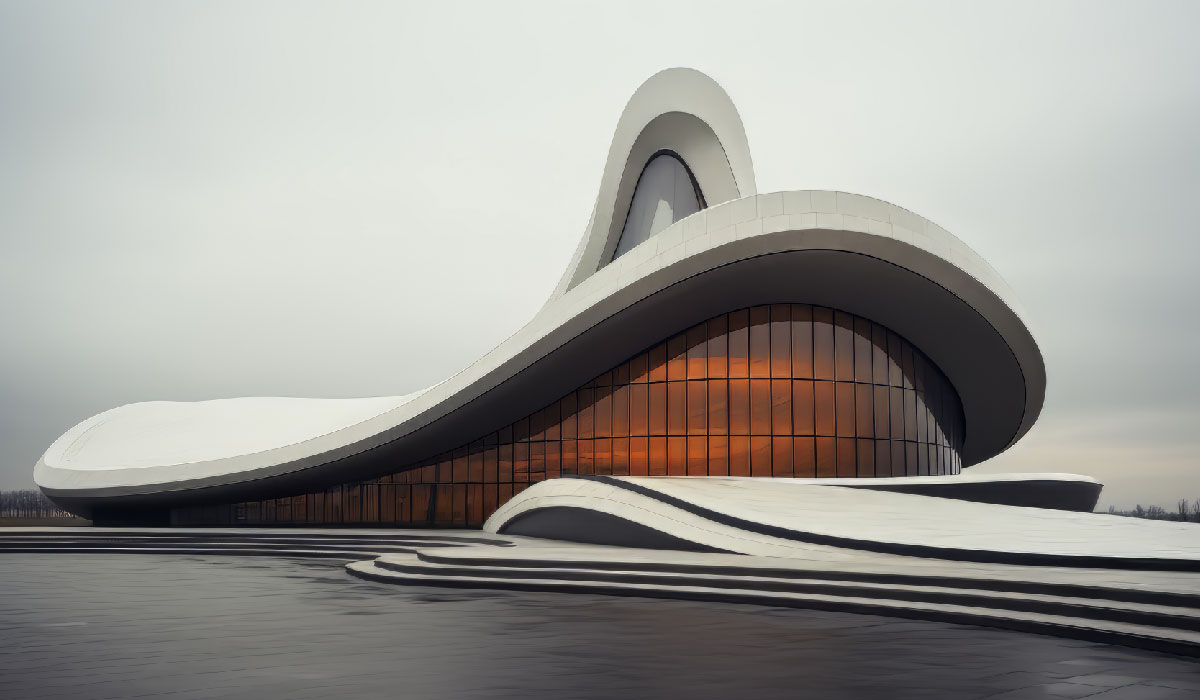
The Intersection of Art and Architecture: A Harmonious Blend of Creativity
Introduction:
In the design world, where form meets function and aesthetics play a pivotal role, the intersection of art and architecture is fascinating. This dynamic relationship between these two discipline has resulted in some of history’s most iconic and visually stunning structures. From the grandeur of ancient temples to the sleek lines of modern skyscrapers, art and architecture have continuously influenced and complemented each other in a harmonious dance of creativity.
Historical roots:
The marriage of art and architecture is not recent; it has deep historical roots. Consider the intricate carvings on the fascade of the Parthenon in ancient Greece or the stunning mosaics adorning the ceilings of Byzantine churches. In these early examples,art served a dual purpose- not only as a form of expression but also as a means of enriching the architectural space with symbolism and cultural significance.
During the Renaissance period, the likes of Leonardo da Vinci and Michelangelo elevated the collaboration between art and architecture to new heights. Their work transcended traditional boundaries, blurring the lines between the two disciplines. Architects began to view buildings as more than functional structures; they saw them as canvases for artistic expression.
Modern Manifestations:
In the 20th and 21st centuries, for example, the integration of art and architecture has become even more pronounced. Contemporary architects often collaborate with renowned artists. This is to infuse a sense of identity and uniqueness into their designs. One notable example is the Guggenheim Museum in Bilbao, Spain, designed by architect Frank Gehry. The building’s undulating titanium-clad facade is a work of art in itself. It transforms the museum into a sculptural masterpiece that harmonizes with its contents.
Similarly, the Walt Disney Concert hall in Los Angeles was designed by Frank Gehry. It is a testament to the symbiotic relationship between art and architecture. The stainless-steel curves of the building evoke a sense of movement and fluidity. They create an immersive experience for both concert goers and passersby.
Function Meets Aesthetics:
The intersection of art and architecture goes beyond mere embellishment. It involves a thoughtful integration of functionality and aesthetics. For instance, the Danish architect Jorn Utzon designed the Sydney Opera House. This iconic structure is a testament to the power of architectural innovation and artistic vision. The distinctive shell-like forms serve a functional purpose by providing excellent acoustics. It also stands as a symbol of Sydney’s identity and artistic prowess.
In more recent examples, the High Line in New York city demonstrates how urban planning, architecture, and public art can come together to create a unique and immersive experience. This elevated park, built on a former railway track, features a curated selection of art installations that enhance the overall atmosphere, turning the space into a living canvas.
Breaking Boundaries:
This often involves pushing boundaries and challenging conventional norms. The works of architects like Zaha Hadid exemplify this ethos. Hadid’s avant-garde designs, such as the Heydar Aliyev Center in Baku, Azerbaijan, defy traditional notions of structure and form. The building’s flowing organic curves create a sense of movement and fluidity. It blurs the distinction between architecture and sculpture.
Collaborative Efforts:
In many cases, the most successful projects at the intersection of art and architecture result from collaborative efforts. Architects working in tandem with artists. They bring diverse perspectives to the table. They are resulting in designs that transcend the limitations of individual disciplines. The Louis Vuitton Foundation building in Paris, designed by architect Frank Gehry, in collaboration with artist Daniel Buren, is a prime example. Buren’s colorful, site-specific installation on the glass sail-like structure adds a layer of meaning and visual interest to the building.
Conclusion:
Finally, the intersection of art and architecture is a rich and multifaceted realm that continues to evolve. Moreover, from historical monuments to contemporary masterpieces, the collaboration between the two disciplines has given rise to some of the most awe-inspiring structures in the world. As architects and artist push boundaries, challenge norms, and embrace innovative technologies, the future promises even more ground breading creations that seamlessly blend the worlds of form and expression. In this dynamic interplay, art and architecture converge to create spaces that serve practical functions and inspire and elevate the human experience.
Proficient architects can do this with extensive architectural design knowledge. Cibi+Simeon Designs is the best architectural firm in Chennai. We have a quality team of architects who collaborate with artists. Collaborating with artists enhances the work’s quality, making us stand out among other architects in the city. Contact us for more details and quality services.
FAQs
1.How does art enhance architectural design?
Art enriches architectural spaces by adding aesthetic value, cultural significance, and a unique identity to structure.
2.Why do architects collaborate with artists?
Collaborations bring diverse perspectives, resulting in designs that transcend individual disciplines, creating innovative and visually stunning structures.
3.How do art and architecture help enhance the aesthetics of structure?
Art and architecture collaborate to elevate aesthetics by infusing cultural identity, symbolism, and innovative design, transforming structures into visually captivating masterpieces.
4.Why is the collaboration of art and architecture significant?
The collaboration enhances spaces, marrying functionality with artistic expression, resulting in visually appealing and culturally rich designs.
5.What impact does art have on the functionality of a building?
Art enhances functionality by creating dynamic spaces that engage occupants, fostering a harmonious blend of aesthetics and practicality within architecture.


